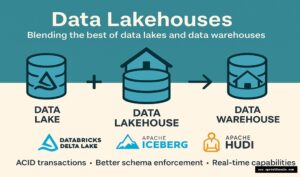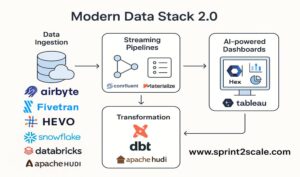Introduction
Scrum, a popular agile framework, has been widely embraced by organizations seeking to enhance their project management practices. However, like any methodology, Scrum is not immune to pitfalls and misinterpretations. In this comprehensive guide, we will delve into the realm of Scrum antipatterns — common pitfalls that teams often encounter during implementation. Understanding these antipatterns is crucial for maximizing the benefits of Scrum and steering clear of potential roadblocks.
Chapter 1: The Essence of Scrum
Scrum, at its core, is an agile framework designed to enhance collaboration, communication, and adaptability within teams working on complex projects. Before we dive into the various antipatterns associated with Scrum, it’s crucial to establish a solid understanding of the foundational principles that define the framework.
1.1. The Three Pillars of Scrum
Scrum is built upon three pillars: Transparency, Inspection, and Adaptation.
1.1.1. Transparency
Transparency in Scrum emphasizes open communication and visibility. Team members, stakeholders, and customers should have a clear understanding of the project’s progress, challenges, and goals. Transparency fosters trust and enables informed decision-making.
1.1.2. Inspection
Scrum promotes regular inspection of work processes, artifacts, and progress to identify areas for improvement. Through inspection, teams gain valuable insights into their performance and can adapt their strategies accordingly. Inspection is a continuous and integral part of the Scrum framework.
1.1.3. Adaptation
The ability to adapt is fundamental to Scrum. Based on the insights gained through inspection, teams should be empowered to make changes that enhance their efficiency and effectiveness. Adaptation ensures that the team remains responsive to evolving project requirements.
1.2. Scrum Roles
1.2.1. Product Owner
The Product Owner is responsible for defining and prioritizing the product backlog, representing the voice of the customer, and ensuring that the team delivers maximum value with each iteration.
1.2.2. Scrum Master
The Scrum Master serves as a servant leader, facilitating the Scrum process, removing impediments, and fostering a culture of continuous improvement. Contrary to a traditional project manager, the Scrum Master focuses on enabling the team rather than directing them.
1.2.3. Development Team
The Development Team consists of professionals responsible for delivering a potentially releasable increment of the product by the end of each Sprint. Self-organization and cross-functionality are key aspects of the Development Team.
1.3. Scrum Artifacts
1.3.1. Product Backlog
The Product Backlog is a prioritized list of features, enhancements, and bug fixes that constitute the product’s roadmap. It is dynamic and evolves as the project progresses.
1.3.2. Sprint Backlog
The Sprint Backlog is a subset of the Product Backlog selected for a specific Sprint. It represents the work the Development Team commits to completing within the Sprint.
1.3.3. Increment
The Increment is the sum of all the completed Product Backlog items at the end of a Sprint. It must be in a potentially releasable state, meeting the Definition of Done.
1.4. Scrum Events
1.4.1. Sprint
A Sprint is a time-boxed iteration, typically lasting two to four weeks, during which a potentially releasable increment is created. Sprints provide a consistent cadence for development efforts.
1.4.2. Sprint Planning
At the beginning of each Sprint, the team conducts Sprint Planning to determine the scope of work for the upcoming iteration. This involves selecting items from the Product Backlog and defining a Sprint Goal.
1.4.3. Daily Scrum
The Daily Scrum is a brief, time-boxed daily meeting where team members share updates on progress, discuss impediments, and plan for the day. It promotes transparency and collaboration.
1.4.4. Sprint Review
At the end of each Sprint, the team conducts a Sprint Review to showcase the Increment and gather feedback from stakeholders. This event provides an opportunity for inspection and adaptation.
1.4.5. Sprint Retrospective
Following the Sprint Review, the team engages in a Sprint Retrospective to reflect on their processes and identify improvements. This continuous feedback loop is crucial for driving continuous improvement.
1.5. Definition of Done
The Definition of Done is a shared understanding within the team of what it means for a product increment to be considered complete. It ensures consistency in the quality of delivered work.
By comprehensively understanding the essence of Scrum, teams can better identify when deviations occur and recognize the impact on the framework’s effectiveness. Chapter 1 lays the groundwork for our exploration of Scrum antipatterns, setting the stage for a detailed examination of common pitfalls and their solutions.
Chapter 2: Common Scrum Antipatterns
Having established a solid foundation in the essence of Scrum, let’s now turn our attention to the common antipatterns that teams may encounter during their Scrum journey. These antipatterns represent deviations from the core principles and practices of Scrum and can impede the framework’s effectiveness.
2.1. The Ceremonial Scrum Master
In this antipattern, the role of the Scrum Master shifts from being a servant leader to merely facilitating ceremonies. The Scrum Master becomes more focused on ensuring that events like Sprint Planning, Daily Scrum, and Sprint Review run smoothly, neglecting the critical aspect of serving the team. This deviation can hinder the team’s self-organization, problem-solving capabilities, and overall growth.
Mitigation Strategies:
- Reaffirm the Servant Leadership Role: Remind the Scrum Master of the importance of their role in facilitating the team’s success through servant leadership.
- Training and Education: Provide additional training to the Scrum Master to reinforce the principles of servant leadership and their impact on team dynamics.
2.2. Sprinting Without a Goal
One of the fundamental aspects of Scrum is the Sprint, a time-boxed iteration during which a potentially releasable increment is created. However, in this antipattern, teams embark on Sprints without a clear goal or vision. This lack of direction can result in confusion, low morale, and a product that does not align with stakeholder expectations.
Mitigation Strategies:
- Define Sprint Goals: Ensure that each Sprint has a well-defined goal that aligns with the overall product vision and priorities.
- Regular Refinement: Regularly review and refine the product backlog to maintain a clear understanding of upcoming work and priorities.
2.3. Backlog Grooming Overkill
While backlog grooming is essential for maintaining a healthy product backlog, teams can fall into the trap of excessive grooming. This antipattern involves spending an inordinate amount of time on grooming activities, potentially leading to diminishing returns and a lack of focus on actual development work.
Mitigation Strategies:
- Set Time Limits: Establish time limits for backlog grooming sessions to ensure they remain focused and efficient.
- Prioritize Backlog Items: Prioritize grooming efforts based on the immediate needs of upcoming Sprints, balancing long-term planning with short-term execution.
2.4. Feature Factory Syndrome
The Feature Factory Syndrome occurs when teams prioritize the quantity of features over the quality of work. This antipattern can lead to a focus on meeting deadlines at the expense of technical excellence, resulting in the accumulation of technical debt and decreased productivity in the long run.
Mitigation Strategies:
- Balance Speed and Quality: Emphasize the importance of delivering high-quality increments while meeting deadlines.
- Technical Debt Management: Implement strategies for identifying and addressing technical debt regularly to avoid long-term negative impacts.
2.5. Zombie Stand-ups
Daily stand-ups are a cornerstone of Scrum, providing a platform for team members to synchronize, share updates, and identify impediments. However, in the Zombie Stand-ups antipattern, these meetings become routine and lack meaningful communication. Team members may disengage, leading to a loss of the collaborative spirit.
Mitigation Strategies:
- Reignite Engagement: Encourage team members to share more than just task updates; discuss challenges, successes, and collaborate on problem-solving.
- Periodic Variation: Introduce occasional variations in stand-up formats to keep the meetings fresh and engaging.
In the upcoming chapters, we will continue to explore various Scrum antipatterns, their consequences, and effective strategies for mitigation. Understanding and addressing these pitfalls is crucial for maintaining the integrity of the Scrum framework and ensuring its success in the long term.
Chapter 3: Team Dynamics and Collaboration
3.1. Lone Wolves in Agile Clothing
Collaboration is at the heart of Scrum, emphasizing the collective efforts of cross-functional teams. However, the Lone Wolves in Agile Clothing antipattern involves team members who prefer to work in isolation, undermining the collaborative nature of Scrum. This deviation can result in knowledge silos, reduced team cohesion, and a lack of shared ownership.
Mitigation Strategies:
- Emphasize Collective Ownership: Reinforce the importance of collective ownership and shared responsibility for project success.
- Pair Programming and Mob Programming: Introduce collaborative practices like pair programming or mob programming to encourage constant collaboration.
3.2. ScrumButs and Compromised Definitions of Done
ScrumButs refer to deviations from the Scrum framework, often introduced with the phrase, “We do Scrum, but…” In this antipattern, compromises on the Definition of Done are made to meet deadlines or accommodate constraints. This can lead to a decrease in the overall quality of deliverables and undermine the value of Scrum.
Mitigation Strategies:
- Continuous Education: Ensure that team members have a thorough understanding of the importance of adhering to the Definition of Done.
- Regular Inspections: Conduct regular inspections to identify areas where the Definition of Done is being compromised and address them promptly.
Chapter 4: Scaling Scrum and Beyond
4.1. Misguided Scaling
As organizations grow, there may be a tendency to scale Scrum without a deep understanding of the scaling frameworks available, such as SAFe, LeSS, or Nexus. The Misguided Scaling antipattern involves implementing these frameworks without considering the specific needs and dynamics of the organization. This can result in increased complexity, reduced agility, and a failure to realize the intended benefits.
Mitigation Strategies:
- Scaled Framework Assessment: Conduct a thorough assessment of the organization’s needs and choose a scaling framework that aligns with its structure and goals.
- Pilot Programs: Implement scaling frameworks on a smaller scale initially to identify and address challenges before full-scale adoption.
4.2. Water-Scrum-Fall Hybrid
In an attempt to integrate Scrum into existing waterfall processes, teams may inadvertently create a Water-Scrum-Fall hybrid. This antipattern can lead to inconsistencies in project management approaches, with the risk of losing the benefits of both methodologies.
Mitigation Strategies:
- Cultural Shift: Promote a cultural shift toward agile values and principles throughout the organization.
- Gradual Transition: Gradually transition from waterfall to Scrum, ensuring that teams fully embrace agile practices and principles.







No Comment! Be the first one.